Strategy of the Week: 7 Proven CRO Ideas That Influence Buying Behavior
Every week, our CEO, Brad Redding, sends out an email with strategic ideas — we thought we’d share with everyone. This post is jam-packed with CRO-based strategy. We hope you find it useful!
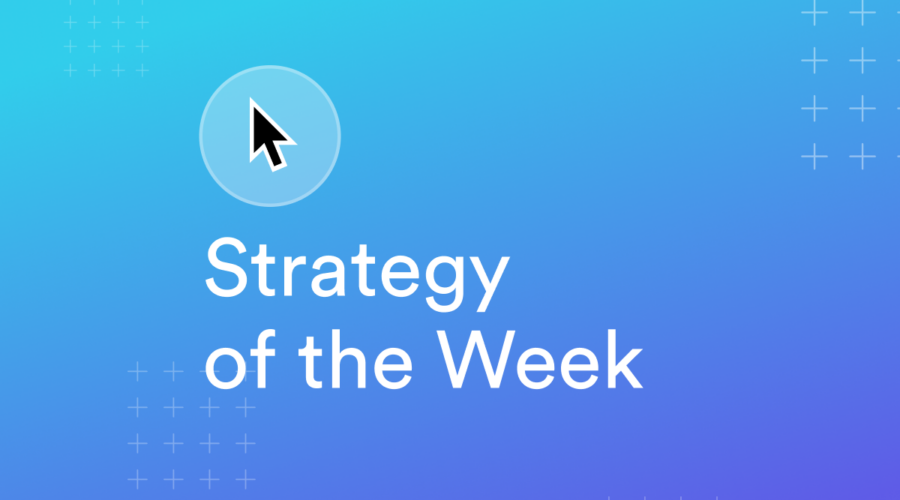
Every week, our Founder and CEO, Brad Redding, sends out an email with strategic ideas — we thought we’d share with everyone. We hope you find it useful!
To kick off your new year, this first Strategy of the Week for 2023 is jam-packed with CRO-based strategy.
Here’s what you’ll learn:
- Learnings from Elevar customers;
- What’s new in the world of tracking, and
- Product updates you need to be aware of
CRO Experiment # 1: Featured Product or Collection in Mobile Menu
Do you have extra white space in your expanded mobile menu?
Or perhaps you’ve never used your expanded mobile menu to promote products or featured collections.
If either of the above are true, then add this experiment to your list of ideas to test this year.
Reduce your customers’ analysis paralysis by making a giant menu list shorter and easier to read. See this example:
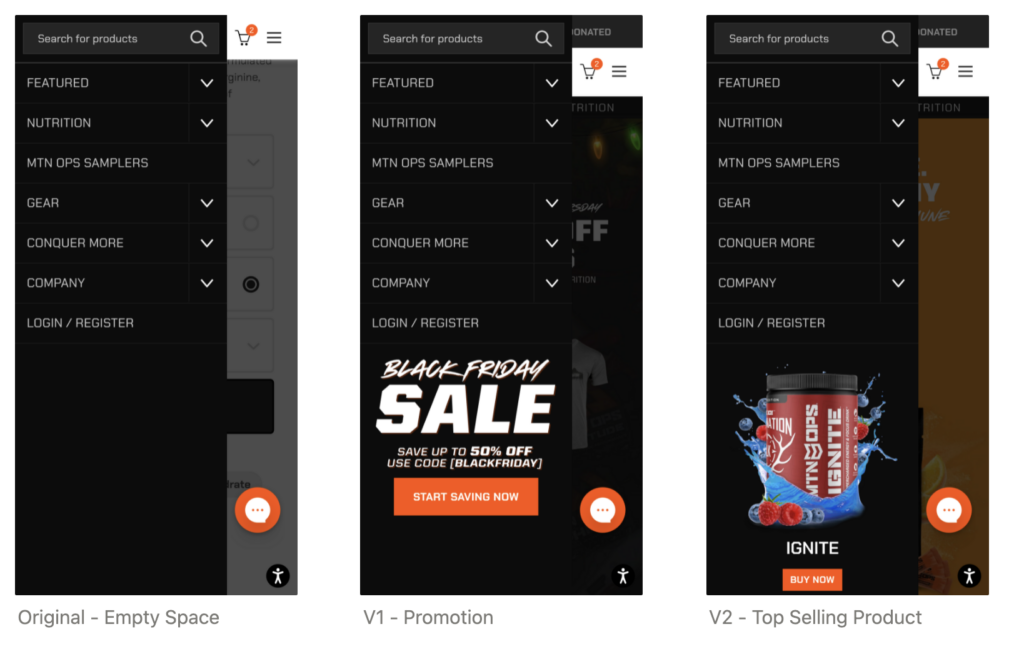
Or perhaps you have a smaller product collection, and can get even more visual and unique like this:
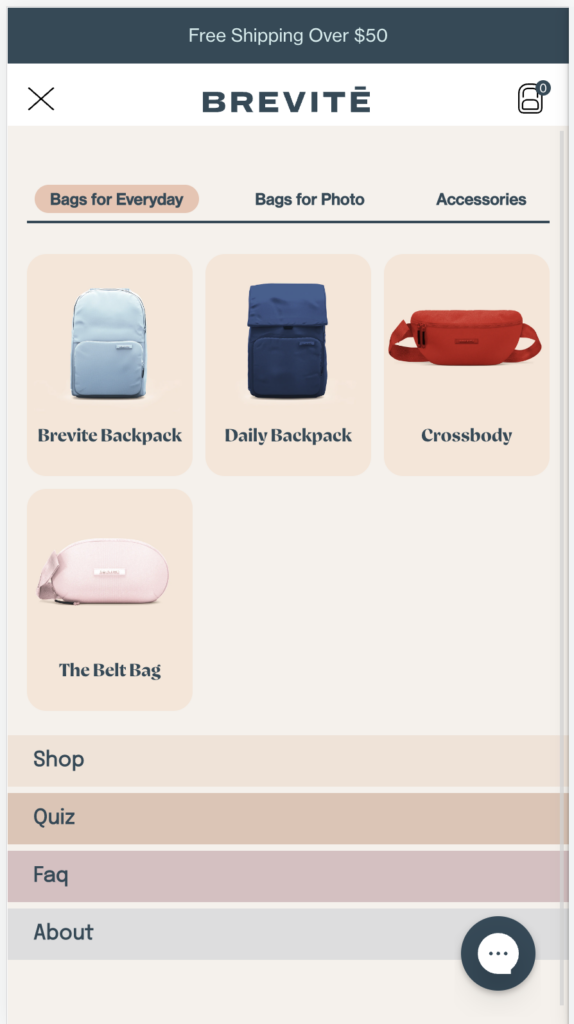
CRO Experiment # 2: Collection Filter Optimization
I’ve talked about the importance of speaking the language of your customer — especially in home page hero copy.
The 3-second test: Does the customer “get” what you sell?
More importantly, can they quickly find what they’re looking for?
If you have collection pages with filters on them today, do you have event tracking configured (using Elevar’s Chrome Extension) to analyze conversion rate? If yes, you’ll get data like this:
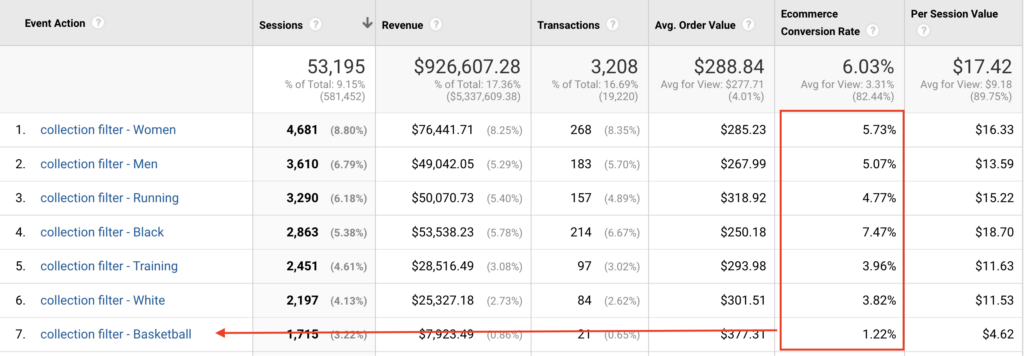
Which you can then use to experiment on changes like this:
- Creating/testing a shop by feature filter (see Brunt Workwear image below)
- Including/excluding certain filters
- Re-ordering filter options based on performance. For example if you see a few filter options with high usage and conversion rates but they are not at the top of option list then test moving them to the top (and hiding low performing filters).
Baymard Institute also released an article recently on why over-categorizing filters can severely impact conversion rates.

Takeaway: if you’re heavy on filters, be sure to analyze and test them (vs set it and forget it!).
CRO Experiment # 3: Calls To Action
This is a friendly reminder of one of the simplest tests you can run: the copy used in your calls-to-actions.
Once again, let’s start with event tracking data (you do have your site tagged and sending this data to GA via Elevar’s Chrome Extension, right 😊? ) link to chrome extension on our site?
Here’s an example of conversion rates for primary calls- to-action using different wording:
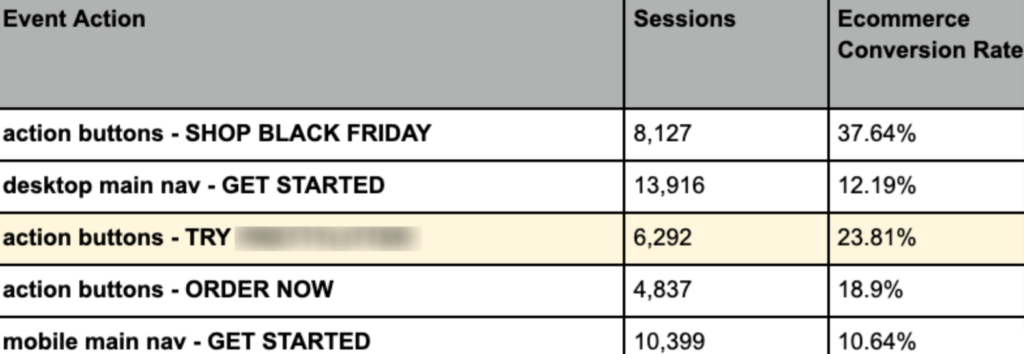
That’s copy-testing at the most basic level.
Try your hero headlines, collection descriptions, and product one-liners.
(Insider Tip: In this podcast episode, we go deep on customer surveys and how to put a 4-step process in place to capture voice-of-customer data to use in your CRO efforts.)
CRO Experiment # 4: Secondary Images on Collection Pages
We shared this over the summer, but it’s still true that secondary images on collection pages continued to perform well in 2022.
Take a look:

We found this especially impactful when there are multiple color variations (vs just alt images for a single product).
CRO Experiment # 5: Motion and Animation
Here’s another repeat strategy that we keep seeing win…
We’ve seen animation work in various places like:
- Top headers (see Super Coffee example below)
- On product pages, drawing attention to the subscription “add-to-cart” option
- Mini-cart free shipping qualifiers
- super_cofee_promo_bar

Have a little fun with bringing movement to your site–especially when you REALLY want to draw attention to something specific on the page.
CRO Experiment # 6: Social Proof Influence
For my marketing friends out there — have you read Influence by Robert Cialdini yet?
There is an amazing chapter all about the psychology of social proof. I’m going to share one of my biggest takeaways:
“Researchers have identified a consequential quirk in human perception. When we notice a change, we expect the change will likely continue in the same direction when it appears as a trend. This simple presumption has fueled every financial-investment bull market and real-estate bubble on record.”
hmmm 🤔 🤔 🤔
He shared a lot of research examples. I’ll try to summarize one:
- One group of students read that only a minority of their fellow students were conserving water.
- A second group was told that although only a minority of other students conserved water, the % of those conserving was increasing.
- The third group received no info on water preservation.
- They were then all asked (at a later date) to participate in a consumer-preference test of a new brand of toothpaste which they were to rate after brushing their teeth.
The students didn’t know the sink was measuring water usage while brushing their teeth.
The second group used the least amount.
They continued on with other questions with this group and additional examples to see if the “…percent increasing…” language changed behavior which it did.
It’s essentially the bandwagon effect when something is moving in a direction.
So how to apply this to eCommerce?
Let’s say you launch a new VIP membership, and you promote the normal way — “New VIP membership. Save XX. etc etc”
But what about adding some influence to this: “We’ve gone from 0% to 24% of new customers becoming VIP members in the last 30 days. The value is real.”? Maybe you cap your VIP membership in lieu of a lower tier membership to add additional scarcity.
Here’s another one:
Let’s say you have a product that sells out frequently (or similar products that have sold out quickly), and you use language like this:
“Just a heads up for our special customers like you — the last 3 shipments have sold out within 12 days. We’re expecting to be sold out on Jan 11th.”
So many angles to take with this!
CRO Experiment # 7: Home Page Content
When is the last time you’ve:
- Measured the performance of all of your content blocks on the homepage on both mobile and desktop;
- Tested these elements — Hiding them all. Moving them around. Personalizing the content of them;
- Questioned your own gut and bias?
Remove elements.
Simplify it.
Make it super easy for users to choose a path to go down.
ASOS continues to have their primary homepage content a binary decision — go to Men or Women collections (going on 5+ years now):
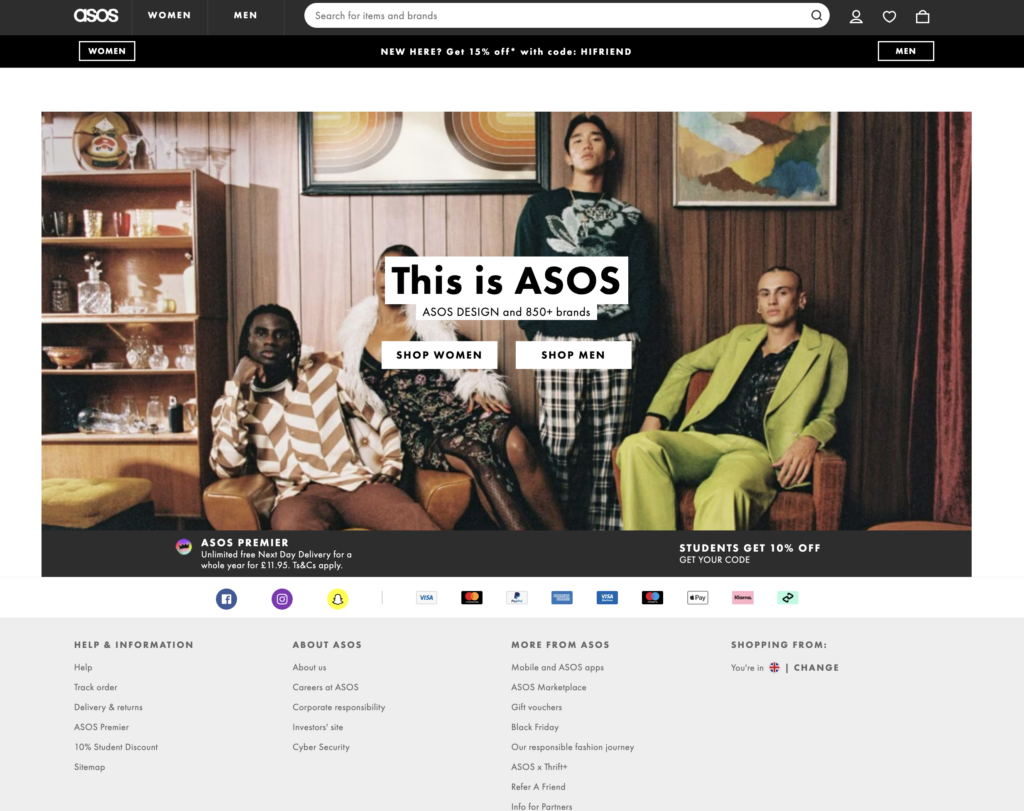
Even the Men/Women landing page is promoted fairly simply.
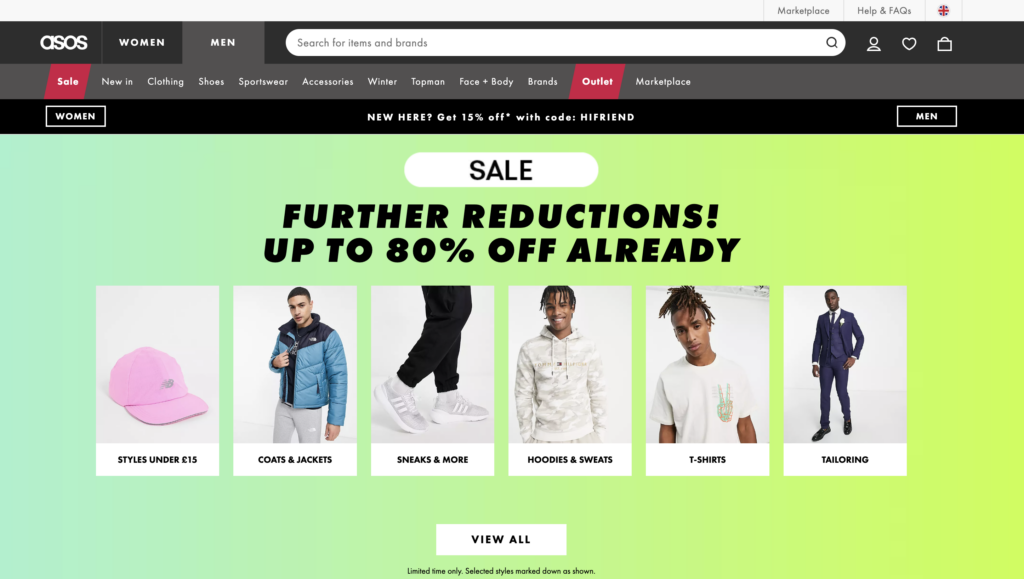
We’ve also been seeing some interesting results in homepage testing the last few months:
- Carousels outperforming static images;
- UGC blocks hurting performance;
- Videos in hero banners hurting performance;
- Image/copy that is not specific to persona hurting performance (shocker!); and
- Find your top 2-3 landing pages and ‘go big’: testing big ideas to make the decision-making simple for consumers on where to go next.
Related CRO Articles:
1. Biggest CRO Wins & Failures
2. 7 Proven CRO Ideas that Influence Buying Behavior
3. Google Optimize Alternatives
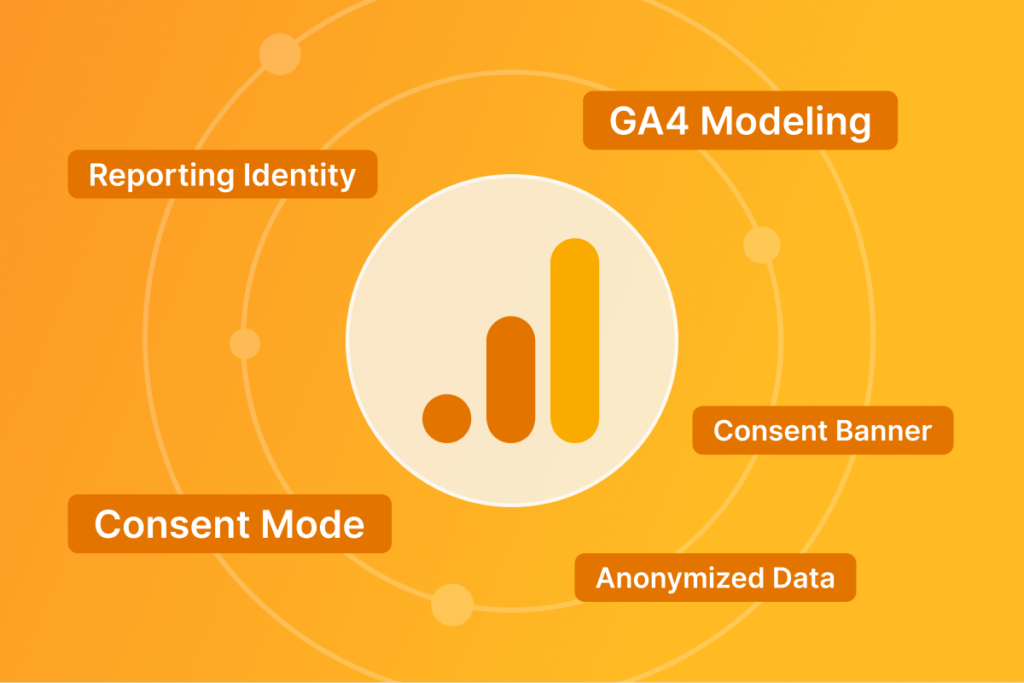
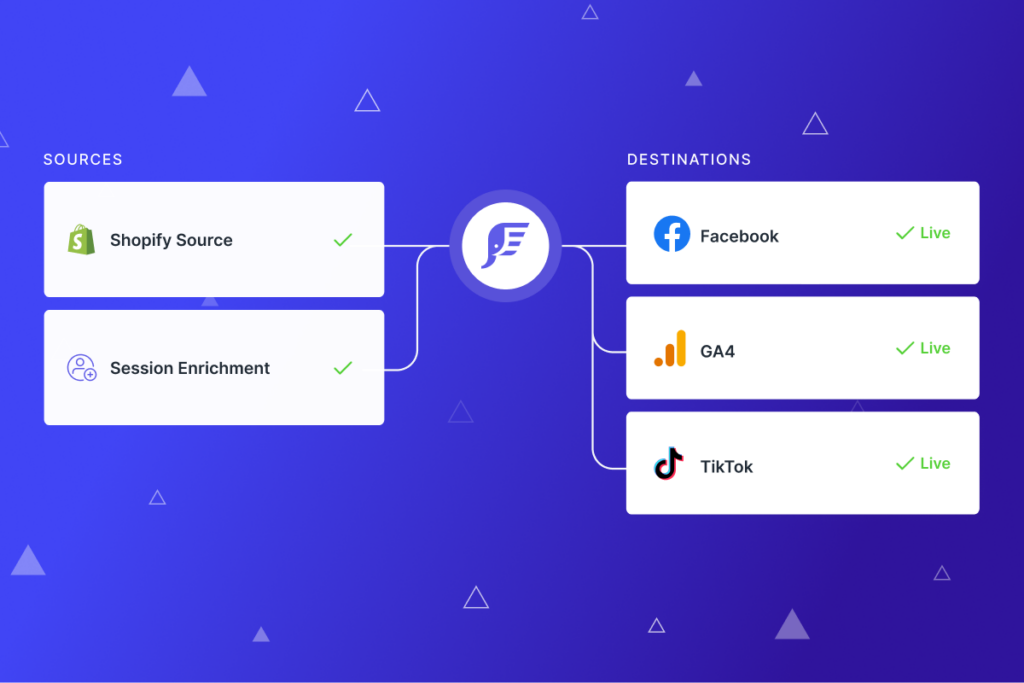
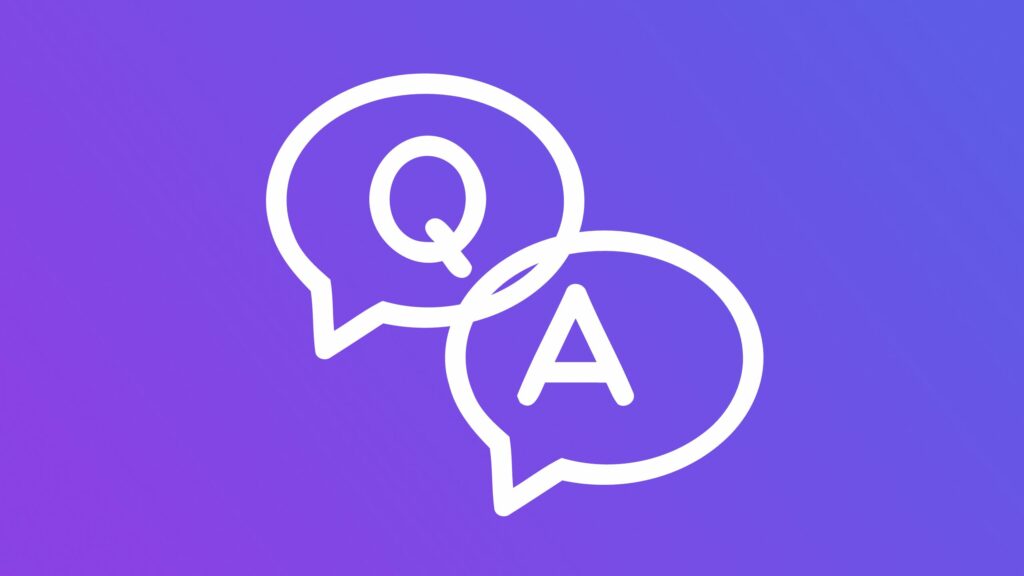
Leave a Reply